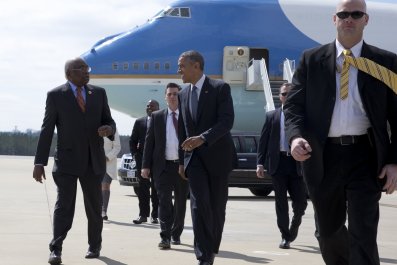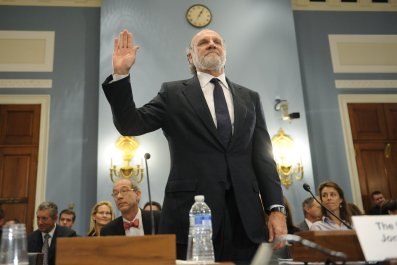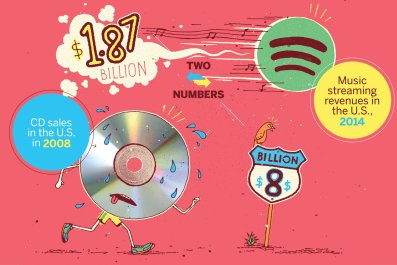Technology has failed to make the world flat after all.
Every ounce of logic says technology should have whipped geography by now—flattening the world, in Thomas Friedman's lexicon, by allowing people to live anywhere and still engage in the global economy. If technology was living up to its promise, more and more people should be moving out of cities to tele-work from charming small towns and lakeside cottages.
Instead, we're streaming to cities like ants to a dropped Popsicle. For the first time, more people globally now live in cities than outside of them. And this is not driven by retirees moving back to get their party on. The best jobs are increasingly in the most dynamic cities and not anywhere else. And people seem to want to work at such jobs, believe it or not, in person. Technology could let us work remotely, yet we are choosing to fight traffic, pay extravagant housing costs and put up with lots of people we don't like. How come?
It seems that in an innovation-driven economy, more innovation happens when smart people are swirled together with a ton of other smart people. Innovation needs an ecosystem, argues economist Enrico Moretti inThe New Geography of Jobs, which details the shift of work to hotbed cities such as San Francisco, New York, Boston and Seattle. "A growing body of research suggests that cities are not just a collection of individuals but complex, interrelated environments that foster the generation of new ideas and new ways of doing business," Moretti writes. "By clustering near each other, innovators foster each other's creative spirit and become more successful."
A study by think tank City Observatory found that since 2007, cities had a 0.5 percent per year growth in jobs, while suburbs suffered a 0.1 percent drop. Millennials—the adults under 30, the biggest generation in U.S. history—are leading that population shift. A U.S. Census study shows that millennials are not heading for the suburbs the way past generations did.
The trend is palpable in Northern California. Silicon Valley, which is really a vast, sprawling suburb, reigned as technology's hot spot for decades. Now the region's office-park campuses are starting to seem as tired as old Sears-anchored shopping malls, while the new superstar tech companies move into urban clusters in downtown San Francisco.
The crazy thing is that technology seems to make centralized city offices less necessary now than ever. Just 20 years ago, at the birth of the web, remote work was barely possible. If you owned a PC, you still had to bleep and buzz through a modem just to get some crappy version of email. Today, you can get your entire work experience delivered to a phone in your pocket. I recently met with Citrix CEO Mark Templeton, who showed me his company's latest offering, which he dubs the "software-defined workplace." Technology can now be the workplace. A physical office could just be an adjunct to a company that otherwise lives in cyberspace.
Technology could also let us live remotely better than ever. We can see our cloud friends on Facebook, shop at online stores, stream movies, attend Harvard classes online. If you want to start a company in Tuscaloosa or Saskatoon, you don't need to kowtow in person to those Sand Hill Road VCs with their Teslas and Apple Watches. Just go on Kickstarter and get funded, no matter where you are.
So basically, the only reason to clump together in cities is, well, the people. As Moretti explains, in our old manufacturing-driven economy, we moved where the factories were, which often was near necessary resources (furniture factories near forests; steel plants near coal mines, and so on). In an innovation economy, we move to what are essentially idea factories: cities full of people.
Moretti's findings dovetail with Steven Johnson's observations in his book Where Good Ideas Come From. Breakthrough ideas come from connections between people and their ideas, and more connections create exponentially more ideas. That leads to cities. Quoting historical studies, Johnson writes, "A city that was 10 times larger than its neighbor wasn't 10 times more innovative; it was 17 times more innovative. A metropolis fifty times bigger than a town was 150 times more innovative."
This helps explain why Yahoo CEO Marissa Mayer famously ordered her tele-working employees back to the office. It's why Hillary Clinton, onstage at last year's Dreamforce conference, said she doesn't just Skype with world leaders. "Technology has put an even higher premium on face-to-face," she said. Recent management trends—in particular, Agile development—thrive on intense, collaborative, in-person group work.
For all these reasons, Moretti argues that the migration to high-innovation cities has staying power. As long as innovation is the surest path to wealth and success, smart people will gravitate to whatever is the most effective way to innovate. Right now, that means going to cities.
A couple of things could change that in another decade or so. One is the huge demographic pull of the millennials. The generation has largely put off marriage and kids, so they are largely single...and on Tinder. So of course they want to be in cities. Who'd want to live in rural Iowa, swipe on Tinder and find out the nearest eligible female is a dairy cow? Only when that huge generation breaks down and finally starts to have families will suburbs start to look appealing.
And maybe by then technology will be good enough to let people move out of cities yet maintain the contact that's so important to innovation. The software-defined workplace is only going to get better. Virtual reality glasses, now the bailiwick of the rich and dorky, will go mainstream and allow you to sit in a home office yet feel as if you're in a conference room with a half-dozen colleagues.
That combination of family and technology might finally finish the job of world-flattening. Millennials could then drain out of cities like water from a punctured bucket, heading off to do their virtual innovating from greener surroundings.
And that will be just fine for boomers like me, who are just waiting for them to leave so we can move back in.




























